This is one of the latest images of comet Hale-Bopp. Notice the intense tail
Click on image for full size
National Astronomical Observatory of Japan
Comet Hale-Bopp update
News story originally written on March 10, 1997
Comet Hale-Bopp is expected to give a spectacular show to the world as it
reaches peak brightness in the skies this month. According to an
update from the European Space Observatory, Hale-Bopp is set to be one of the
brightest comets in recent history. The comet is currently visible in the early
morning sky, and later this month it will be visible in the evenings.
The comet's tail is currently at a length of 10 degrees and is expected to
expand to about 25 degrees later this month. As the image at left shows, the
tail width and length are much larger than expected, meaning that the comet is
much brighter.
Because of this unusual tail, astronomers are currently contemplating whether
or not the comet's nucleus will split. If this does occur, the heating from the
sun will create more evaporation from the nucleus' parts and we can expect a
dramatic increase in brightness.
Chemically speaking, Hale-Bopp also has some unusual characteristics. Most
interesting is the detection of ionized hydrogen carbon monoxide (HCO+) in
the comet. This compound has never been noticed in a comet before. Other
chemicals found in the comet include, sodium (Na), sulfur monoxide (SO),
ionized carbon monoxide (CO+), cyanogen radical (CN), and water (H2O).
You might also be interested in:
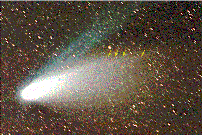
Hale-Bopp continues to offer new surprises as two astronomers report of their study of the comet. Using the Hubble Space Telescope and the International Ultraviolet Explorer, the astronomers did a year-long
...more
Comet Hale-Bopp is expected to give a spectacular show to the world as it reaches peak brightness in the skies this month. According to an update from the European Space Observatory, Hale-Bopp is set
...more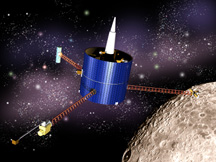
The construction of NASA's Lunar Prospector has been completed. This spacecraft will travel to the Moon in September 1997 to make the first complete compositional and gravity maps of the Moon. The Lunar
...more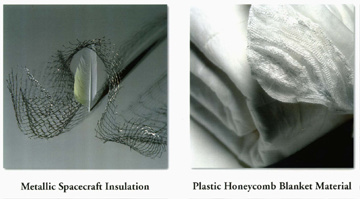
We all know that milk "does a body good." Who knew that plastic milk containers could save lives in an emergency? In an attempt to find the perfect lightweight metal insulation for spacecraft, NASA created
...more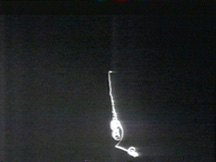
NASA and the Italian Space Agency (ASI) have released the report of the investigative board appointed to determine factors which resulted in the Feburary 25 tether break and loss of the Tethered Satellite
...more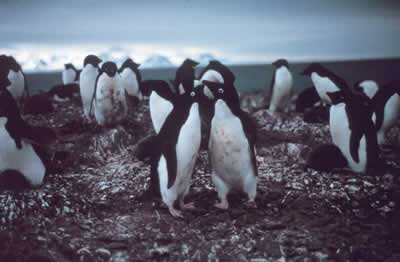
Scientists have recently discovered that thousands of Adelie Penguins thrive in patches of the chilly Southern Ocean near Antarctica's coastline. In these special areas of the ocean, called polynyas,
...more
A new study has found that a mixing of two different types of magma is the key to the historic eruptions of Mount Hood, Oregon's tallest mountain, and that eruptions often happen in a relatively short
...more













